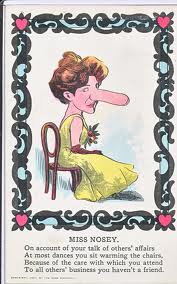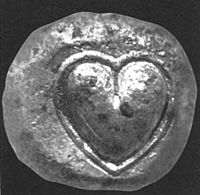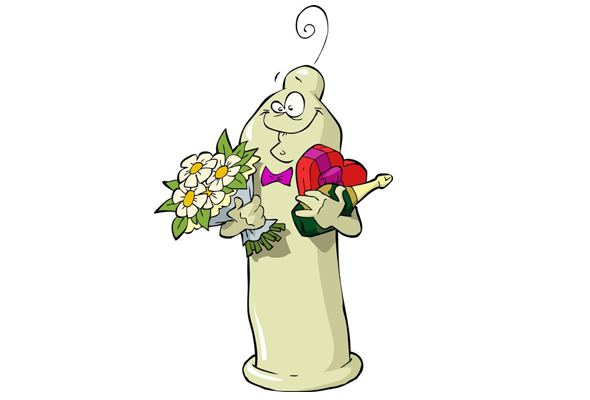I had my suspicions about Valentine’s Day from a very early age. What was it all about? Mum sent Dad a card, Dad sent Mum a card, and neither of them signed their offerings. How bizarre!
Then at a certain point, friends at school started sending and receiving cards. Again, nobody signed them. For some reason, the idea was to declare your feelings for someone in a manner that had inbuilt risk. What if the object of your affection guessed wrong,thought the card came from your best friend, and the two of them disappeared, arm in arm, off into the sunset?
The chirruping of the bluebirds would scarcely mask the grinding of teeth, and the swelling strains of the violin would be punctuated by the sound of broken dreams crashing to the floor. I came to the conclusion that the best cards came from people who managed to not sign in a way that made it possible to guess who had sent them.
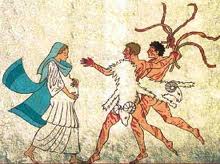 Research into the origins of Valentine’s Day suggests that the tradition takes its inspiration from a fantastic Roman tradition of prancing about half naked and thwacking people on the bottom with animal skins: a sort of classical interpretation of the wet tea towel fight. All great fun, but guaranteed to leave somebody feeling inadequate and unloved, as they pondered why their gluteus maximus did not deserve a licentious whack with the skin of a freshly flayed piece of road kill.
Research into the origins of Valentine’s Day suggests that the tradition takes its inspiration from a fantastic Roman tradition of prancing about half naked and thwacking people on the bottom with animal skins: a sort of classical interpretation of the wet tea towel fight. All great fun, but guaranteed to leave somebody feeling inadequate and unloved, as they pondered why their gluteus maximus did not deserve a licentious whack with the skin of a freshly flayed piece of road kill.
The early Church adopted this delightfully romantic festival, in an attempt to get in on the action. Lupercalia gave way to St Valentine’s Day. According to one source, the Valentine in question was in the habit of illegally marrying members of the armed forces, and was martyred for it some time in the third century. His skull has been kept as a testament to romance, displayed in the Basilica of Santa Maria in Rome.
But wait! There is another St Valentine. This one was apparently also martyred, but has his relics somewhere else.
And lurking in the wings is yet another. He was martyred somewhere in Africa, nobody knows why and whether he was a romantic individual, but they kept his head in an abbey in Winchester, just in case.
A picture is beginning to develop, I feel. I am not sure what the picture is, but it must, surely, have some bearing on why people spend millions of pounds, dollars, euros, cestercies, etc on greetings cards, chocolate, perfume and jewellery every year.
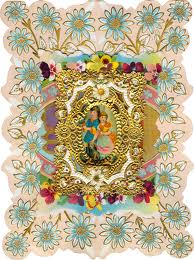 Apparently, after a slow start over several hundred years, Valentine’s Day was popularised in the 19th century. A fad for sending hand-made cards with soppy messages led to generations of fathers having to pretend that they hadn’t seen young Archibald slipping his frilly, sugar-coated missives under the front door in the wee hours of February 14th. In an attempt to avoid paternal displeasure, the love-struck swains of the Victorian age would hide their declarations of love under lacy frills and furbelows, hoping that pater would mistake their outpourings for a dentist’s appointment, or a reminder to renew a subscription to Chastity Today.
Apparently, after a slow start over several hundred years, Valentine’s Day was popularised in the 19th century. A fad for sending hand-made cards with soppy messages led to generations of fathers having to pretend that they hadn’t seen young Archibald slipping his frilly, sugar-coated missives under the front door in the wee hours of February 14th. In an attempt to avoid paternal displeasure, the love-struck swains of the Victorian age would hide their declarations of love under lacy frills and furbelows, hoping that pater would mistake their outpourings for a dentist’s appointment, or a reminder to renew a subscription to Chastity Today.
Assuming that everyone of the age of twenty is mentally feeble is clearly not solely the preserve of modern teenagers.
From its beginnings in the hand made coded messages of our great great great grandparents, the sending of Valentine’s cards has become a huge industry. Celebrating the vaguely schizophrenic Saint has become an opportunity for selling cards, chocolates, perfume, flowers, beer mugs, welly boots, champagne, posh dinners and spa weekends. If you can decorate it with a heart or two and paint it red or pink, anything is a possible Valentine’s token of undying love. Sources tell me that February 14th is second only to Christmas in its revenue generating possibilities.
As I was pondering the rationale behind the card companies producing “Happy Valentine’s Day, Mother” cards (ridiculous opportunism, or a sincere desire to include those with an Oedipus complex?) I began to wonder why the romantic depiction of a heart is the shape it is. Very few people would be thrilled to receive an anatomically accurate depiction of a heart, but why this particular shape?
I decided to investigate. It was not as easy as I had hoped to find any sort of answer. My usual ploy of typing a question into my search engine of choice proved unsuccessful. It must have been something to do with how I phrased it, but I was uninspired by the options offered.
After an informative wander down a wild goose chase of ‘vinegar valentines’ of bygone days, I finally happened upon several articles that all suggested the same thing: our modern graphical interpretation of a heart is based upon the shape of a plant used by the ancients as a contraceptive.
Roman poet Catullus was chuffed to bits that he and his ladylove could indulge in carnal knowledge of each other with no fear of repercussions, as long as they had a supply of the seeds of the silphium, a type of wild fennel. Doctors of the day wrote about the contraceptive properties of the plant, which seems to have served as a sort of early ‘morning after pill.’
Supplies of silphium were limited by the very small area in which the plant would grow. It became so sought after that at one point it was worth its weight in silver, and is image was used on coins. Of course, the golden age of silphium came to an end. According to one writer, “as mankind is wont to do, the custodians of this scarce commodity eventually surrendered to greed and short-sightedness, overtaxing the renewable resource until it was hopelessly exhausted.”
Silphium has been extinct for hundreds of years, but its symbolism lives on in the millions of cards and gifts exchanged on this special day for celebrations of love and romance.
I wonder if Geoff would appreciate a card emblazoned with cupids and condoms? Somehow, I suspect not.








